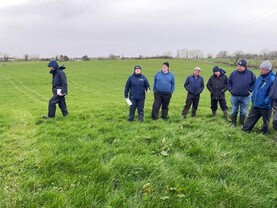The end of March is here and it hasn’t been a month to write home about by any account.
Farmers are reporting that field conditions were actually better in February than they are now, with silage and slurry storage both tight on a lot of farms, particularly those typically at grass full-time by early to mid-March.
It’ll be a case of beg, borrow but don’t steal when it comes to sourcing silage or a home for slurry that is creeping up towards slats at a rapid rate.
Typically, many farmers would have spread, or be preparing to spread, first-cut silage fertiliser by this stage of the year, but with torrential rain, cooler than normal soil temperatures and waterlogged soils, they have rightly held off. However, a delay in fertiliser application will likely have the knock-on effect of a delay in cutting date.
With many farmers unable to get silage ground grazed off this year, the double whammy of old growth and a delay in cutting is likely to have a significant effect on first cut silage quality.
Cutting back on N
The option available to farmers really is to cut back on nitrogen (N) application in order to maintain a cutting date of mid to late May. Typically, two units of N per day will be taken up and used by the grass plant.
Assuming no slurry has been recently spread on the land (which may result in some background N sitting in soil) and the fertiliser is spread on 5 April, 50 units of N will be used up in the month of April.
All going well, an additional 30 units would be used up by 15 May, which would be the target date for many farms. Therefore, an application containing 80 units as opposed to 100 units+ may be a better option if targeting top quality first cut silage.
The above is dependent on the fertiliser being spread by 5 April and normal to good growth conditions which will use up the N that is applied.
Quantity
There will likely be a knock-on effect on quantity of grass by the above option, with the other option being to target a medium to good quality silage harvest with decent bulk levels by stretching out cutting until late May to early June, though grasses will likely start to head out at that point.






 This is a subscriber-only article
This is a subscriber-only article











SHARING OPTIONS: